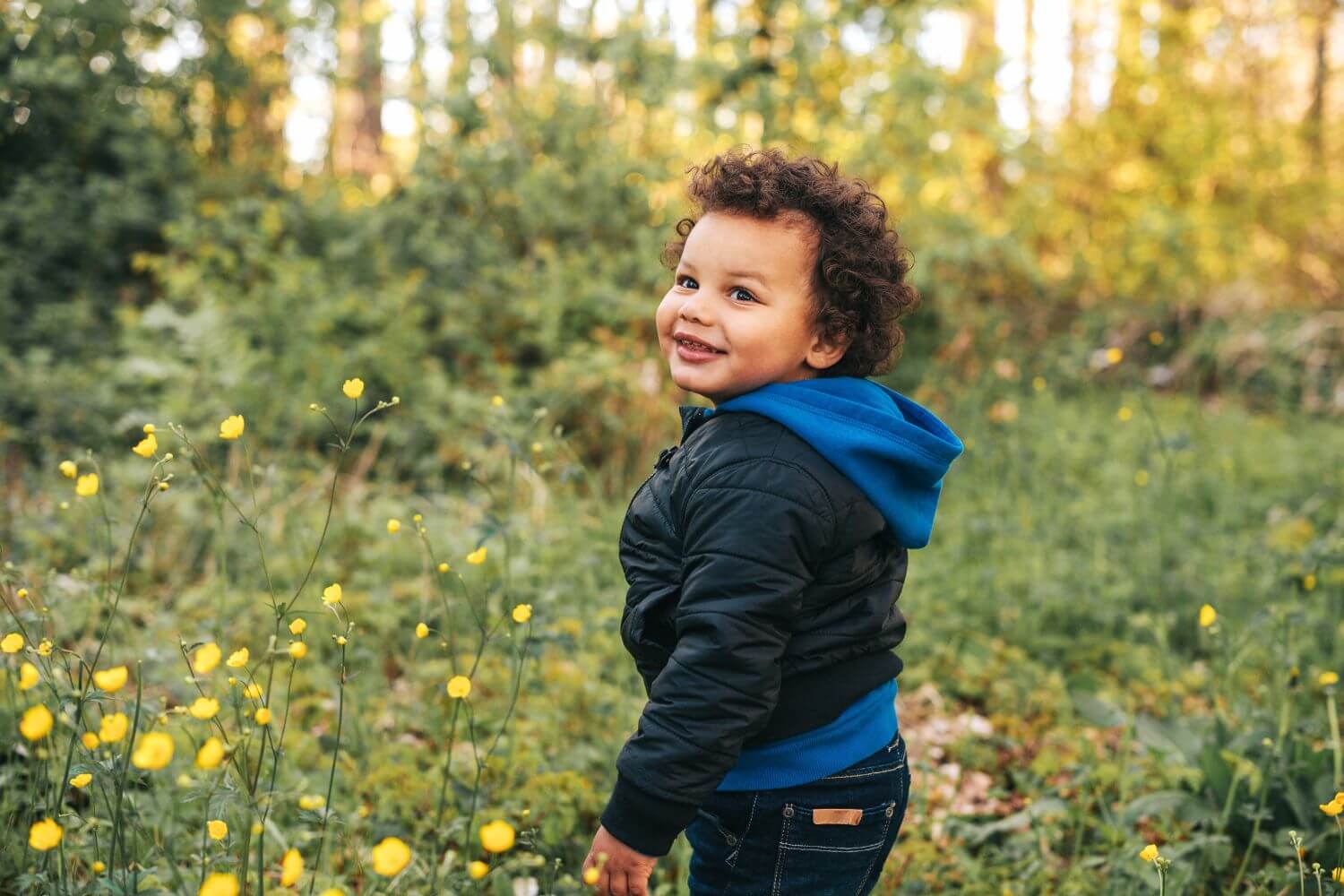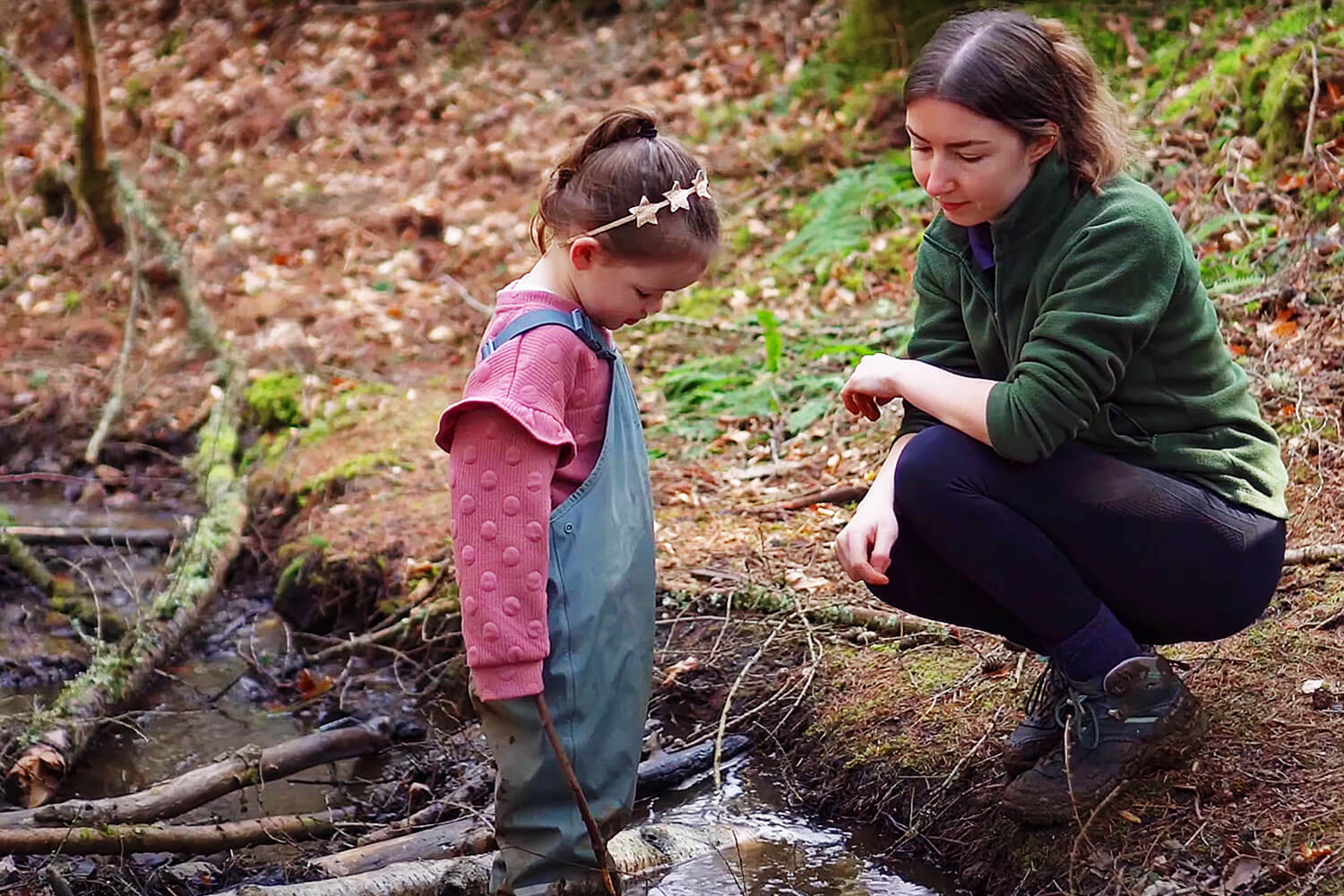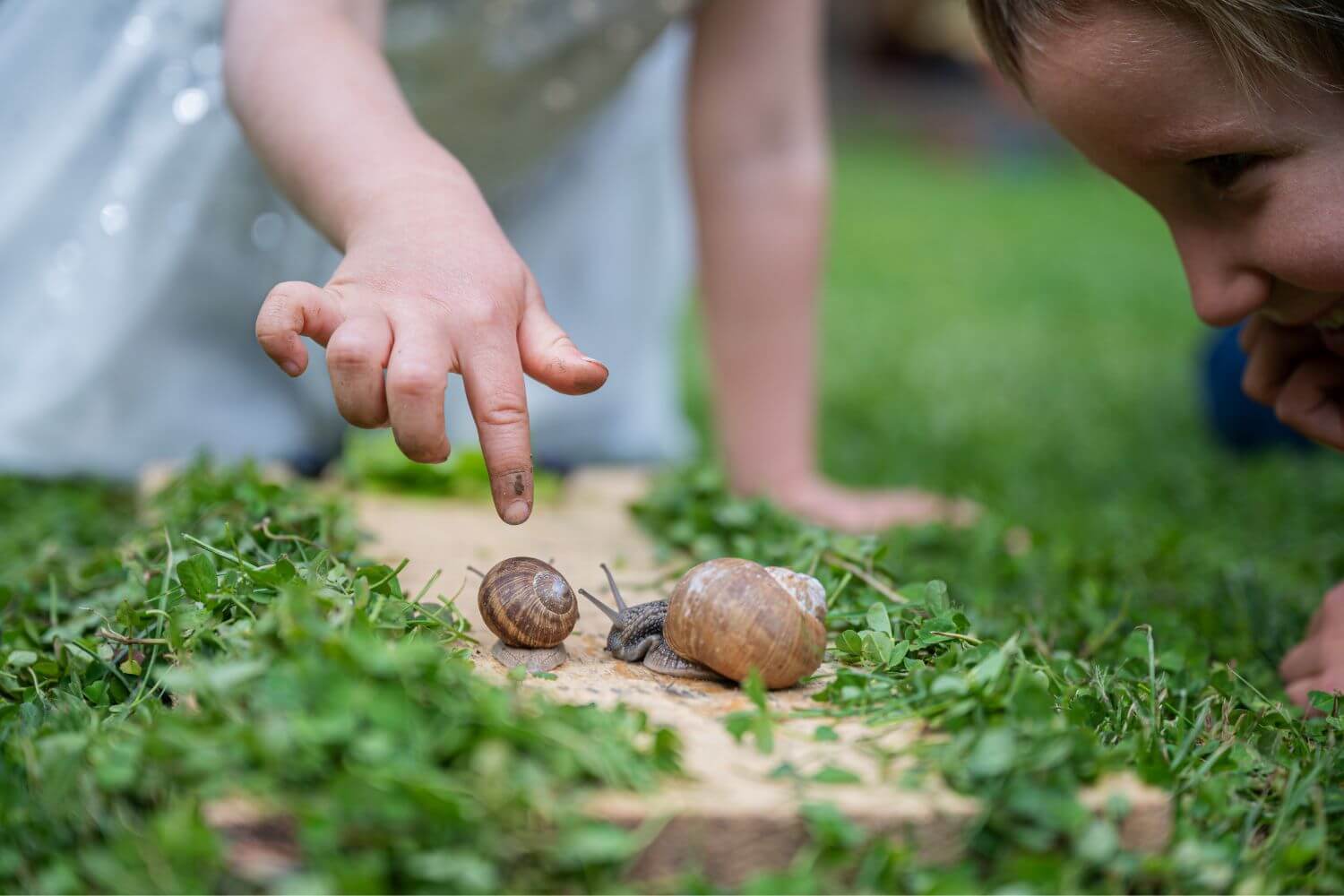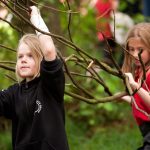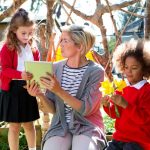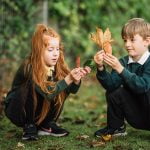3 things you need to know about outdoor learning in the early years | Ask Educators
We asked early childhood educators to share their essential knowledge for taking learning outdoors in the early years.
We’ve explored why you should try outdoor learning and how to get started in any educational setting, plus some specific advice on outdoor learning at primary school and secondary school. Now, let’s take a look at some essential knowledge for outdoor learning in the early years.
Taking young children outside to learn can present unique challenges — and benefits! The outdoors provides a rich learning environment which is uniquely suited for early years education. Are you making the most of it in your setting?
For this post, we asked early years educators to share their advice for newcomers to outdoor learning. Along with guidance from LtL’s early years experts, we’ve categorised the responses into the three essential pieces of knowledge you need in order to take learning outdoors in the early years.
Visit our early years hub for outdoor lesson ideas, training, and guidance specific to outdoor learning in your setting. For now, here are three things you need to know about outdoor learning in the early years.
Children facilitate their own learning outdoors — follow their lead!
Outside, it can actually make your job a lot easier, because older children role model a lot of the play. It’s aspirational for the younger children to see the older children cooperating and achieving, and it really speeds along their development. There’s a real opportunity for a family dynamic in the outdoors, and this is particularly valuable for children who don’t have much interaction with other children outside of their early years setting. Having opportunities to interact with older children who are working at different levels can really scaffold their learning.
— Jane Mackenzie, Training and Development Officer at Learning through Landscapes
“I usually have an activity planned, but l let the children lead the sessions to see what they want to do and where it takes us as a group. Outside, there are fewer obstacles to play and imagination, and this creates so many opportunities for children to engage in their learning. Have an open mind — there’s no right or wrong way to learn outdoors.”
— Catherine, early years educator from Tonbridge
Learning is less restricted outside. Indoors, children tend to think objects have a specific use, e.g. cubes are for counting. However, they can use pinecones and acorns for counting, cooking, making patterns, using as money, pulling apart to see what’s inside etc.
— Lizzie, early years educator from Essex
“Allow children to engage with the outdoors. There’s a lot of discovery going on, so we just need to be on hand to facilitate and guide that. Observe the learning, rather than interrupting it.”
— Gordon Maclean, Early Years and Parenting Officer at Learning through Landscapes
Building routines makes getting outdoors easier
A lot of behavioural problems outdoors stem from anxiety. Children need time to process new things and building routine really helps with that. ‘Would you like to go to the woods?’ is an abstract idea for a child, but a representational object (e.g. welly boots), image, or song can help children to overcome that. Children are on a continuum in terms of their communication skills, so it’s about being clear and consistent. When children know what to expect, they can start to regulate and manage their behaviour and emotions.
— Jane Mackenzie, Training and Development Officer at Learning through Landscapes
“Outdoor play is timetabled as part of the preschool day and has, therefore, become a habit for all involved. Allow for the novelty factor the first few times before the children begin to settle into being outdoors.”
— Kierna, early years educator from Dungannon
Some children are not used to being outdoors, and it can feel vast and unfamiliar at first. This can be quite overwhelming for them, so it’s important to normalise the experience over time. You could include waterproof clothing in the dressing up box to get children used to the feel and sound of the materials, or you could practise the journey between the different learning environments. It’s OK to go out for a short time at first, perhaps to collect materials to bring indoors for an investigation or an art display. The more you do it, the easier it will be.
— Gordon Maclean, Early Years and Parenting Officer at Learning through Landscapes
“Outdoors is absolutely the best environment for children, so we encourage their interest. Our setting has an open-door policy: all children have garden access at all times throughout the day and we have three staff outside at all times.”
— Grace, early years educator from Kilsyth
If free flow play isn’t an option in your setting, think about how you can make the process of going outside easier. Is there a way children can signal to you if they want to go outside? Is there a different route you can take which reduces the number of barriers to the outdoors? If the children can’t see the outdoor space from your room, they won’t ask to go outside so you’ll need to create opportunities for them to self-select.
— Jane Mackenzie, Training and Development Officer at Learning through Landscapes
Pay attention to the learning which takes place throughout the process
“Building up the process of getting in and out can feel frustrating, but treat the preparation stages as a learning point. For example, getting dressed involves communication, sequencing skills, and fine motor control. The journey to your local greenspace builds important life skills like road safety. Remember, it’s all part of the learning.”
— Gordon Maclean, Early Years and Parenting Officer at Learning through Landscapes
The outdoors provides rich, sensory first-hand experiences; space and freedom to explore, experiment, and investigate; and endless opportunities for adventure, risk, challenge, and meaningful learning across all areas of the curriculum. Observe how much learning takes place throughout the process, and reflect on how many ‘wow’ moments the children experience.
— Beverley, early years educator from Caerphilly
“Be curious and look for the learning taking place. Observe how the children move, how they interact with each other, and how they use the environment and the resources they find.”
— Ester, early years educator from Cork
The sky is the limit when it comes to learning outdoors! Nature provides every possible link to health, wellbeing, emotional literacy, social skills, etc. Every area of the curriculum is covered, and children are engrossed in whatever takes their fancy, providing educators with as many teachable moments as they can cope with. The time flies without ever looking at your watch!
— Grace, early years educator from Kilsyth
“Sometimes, evidencing outdoor learning is considered challenging, but it doesn’t have to be. Taking photographs and videos, capturing audio recordings, making notes on clipboards, and collecting the ‘special’ items children gather outdoors are easy ways to make observations without interrupting your activities. Most importantly, take note of any changes to behaviour! Do numbers and patterns seem easier for children to understand? Do they show knowledge they haven’t when indoors? We all learn and retain information differently, so if you notice a child is more engaged outdoors, use this to inform the next stage of your planning.”
— Carley Sefton, CEO at Learning through Landscapes
Activity: A Sound Walk
We offer a range of outdoor lesson ideas across every curricular area, and these can be especially helpful when you’re getting started with outdoor learning. However, as you grow in confidence, we want you to use our lesson ideas as inspiration rather than instruction.
As we’ve discussed, outdoor lessons don’t always go to plan — and this is a good thing! Being able to adapt your lesson plan accordingly opens up opportunities in the outdoor classroom, so don’t be afraid to ‘take it, break it, and make it your own’ as our Early Years and Parenting Officer, Gordon MacLean, puts it.
Let’s start by walking through a lesson idea together. ‘A Sound Walk’ is a simple activity with a number of learning outcomes across a range of curricular areas. During this activity, children will explore a designated area, using stick beaters to create sounds on different materials and surfaces.
This exploratory play activity is ideal for developing descriptive vocabulary and fine motor skills. However, you can easily adapt the activity to support a wide range of learning outcomes according to your preferences. For example, could you add a new sensory dimension by repeating the activity in different weather conditions? Could you encourage self-directed learning by allowing children to choose their own tools? Could you develop letter formation skills by spelling the sounds with chalk on the playground?
Remember to keep our advice in mind:
- If the activity goes off track, it’s not the end of the world! Go with the flow, let the children take the lead, and observe the learning that takes place.
- Build up your routine. At first, simply getting outdoors might take up all the time you put aside for the activity. However…
- Remember that important learning is still taking place, even if things don’t go to plan!
Download our free ‘A Sound Walk’ lesson idea here.
Discover more resources for outdoor learning
By now, you should feel thoroughly prepared to take learning outdoors in the early years. If you’re ready to get started, visit our early years hub where you will find everything you need for outdoor learning in the early years, including lesson ideas, training, and guidance.
Make sure you’re signed up to our newsletter to receive the latest outdoor learning news and opportunities direct to your inbox. For even more advice about outdoor learning in your educational setting, take a look at the rest of the posts in this series:
Why you should try outdoor learning this year
Our top tips for newcomers to outdoor learning
5 barriers to outdoor learning at primary school and how to overcome them
How to teach any subject outdoors at secondary school


